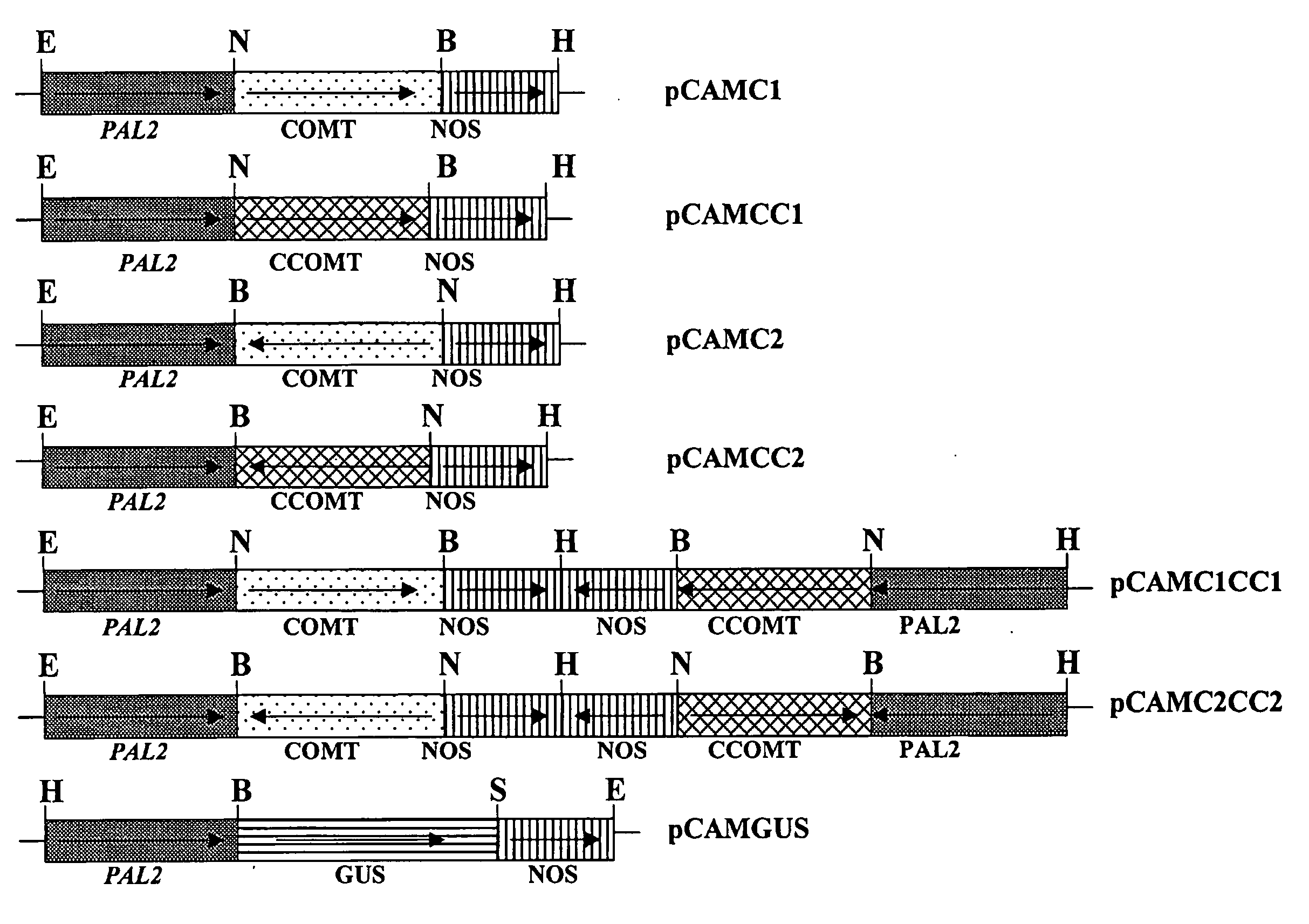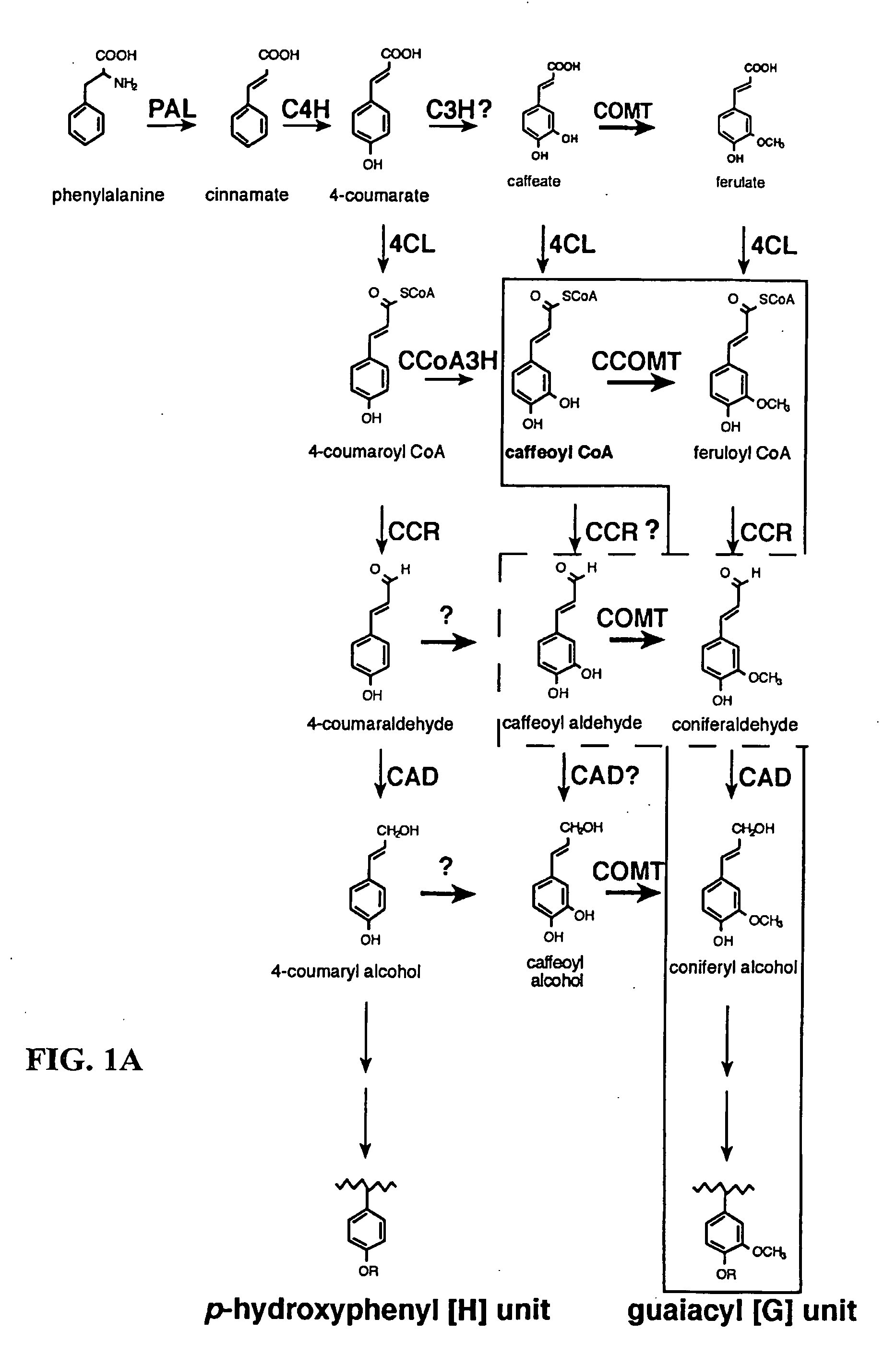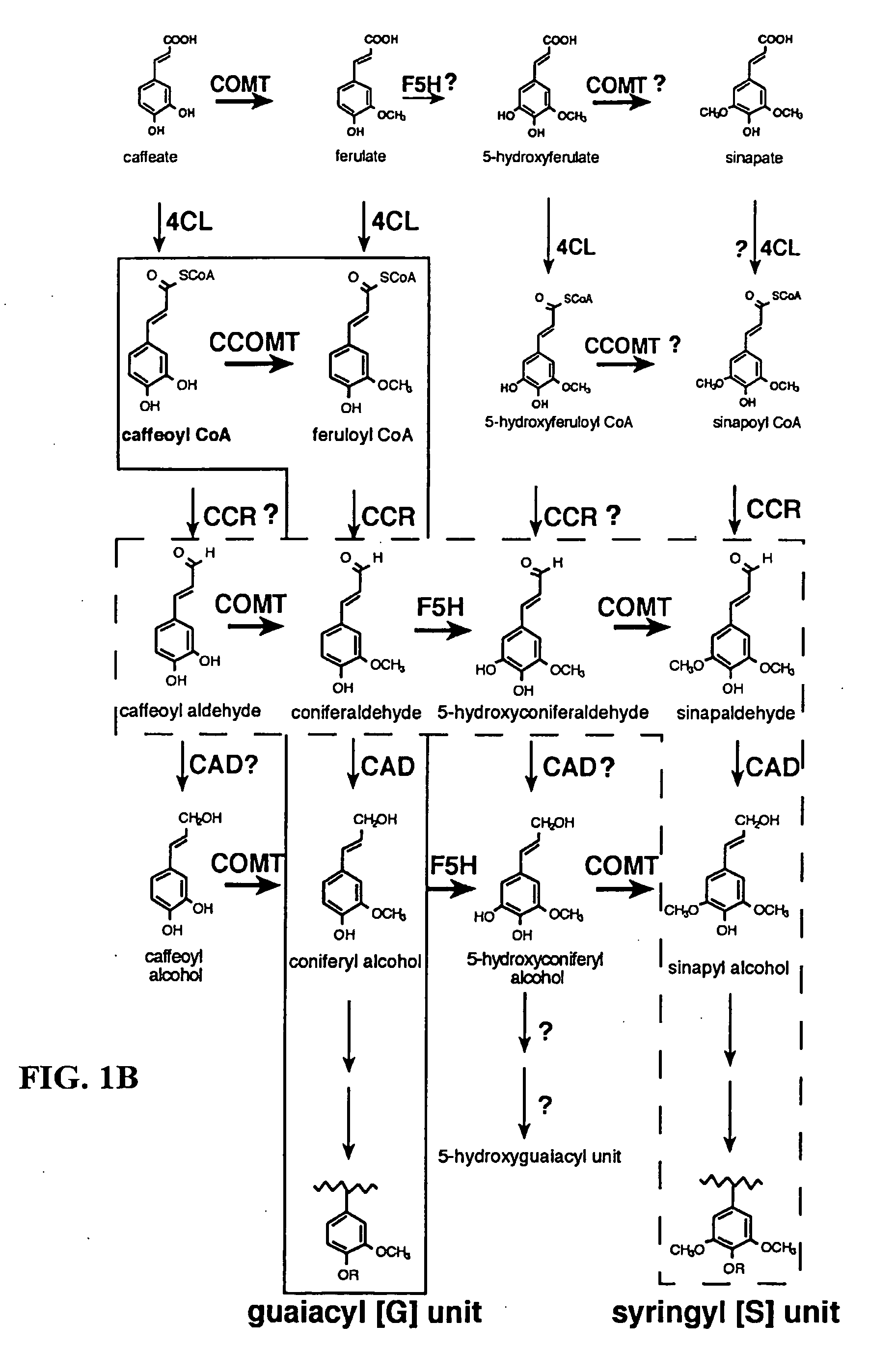Method for modifying lignin composition and increasing in vivo digestibility of forages
a technology of lignin and composition, applied in the field of transforming plants and transformed plants, can solve the problems of incongruity, high cost, and potential polluting of chemical treatments necessary for the removal of lignin from trees, and achieve the effect of improving the digestibility of forage legumes
- Summary
- Abstract
- Description
- Claims
- Application Information
AI Technical Summary
Benefits of technology
Problems solved by technology
Method used
Image
Examples
example 1
Lignin Modification of Alfalfa
[0034]Alfalfa plants were successfully transformed using the lignin-modifying transformation methods of the present invention. Alfalfa plants exhibiting changes in both lignin content and composition were obtained.
[0035]To drive expression of transgenes in forage legumes, we chose the bean PAL2 promoter, which was previously characterized as associated with lignification and strongly expressed in the vascular tissue of transgenic tobacco (Leyva, et al. 1992. “Cis-element combinations determine phenylalanine ammonia-lyase gene tissue specific expression patterns,”Plant Cell 4:263-271; Shufflebottom, et al. 1993. “Transcription of two members of a gene family encoding phenylalanine ammonia-lyase leads to remarkably different cell specificities and induction patterns,”Plant J3:835-845). A number of gene constructs were made, either to test the tissue specificity of the bean PAL2 promoter in alfalfa using the reporter gene GUS, or to drive expression of the...
PUM
| Property | Measurement | Unit |
|---|---|---|
| pH | aaaaa | aaaaa |
| pH | aaaaa | aaaaa |
| pH | aaaaa | aaaaa |
Abstract
Description
Claims
Application Information
 Login to View More
Login to View More - R&D
- Intellectual Property
- Life Sciences
- Materials
- Tech Scout
- Unparalleled Data Quality
- Higher Quality Content
- 60% Fewer Hallucinations
Browse by: Latest US Patents, China's latest patents, Technical Efficacy Thesaurus, Application Domain, Technology Topic, Popular Technical Reports.
© 2025 PatSnap. All rights reserved.Legal|Privacy policy|Modern Slavery Act Transparency Statement|Sitemap|About US| Contact US: help@patsnap.com



